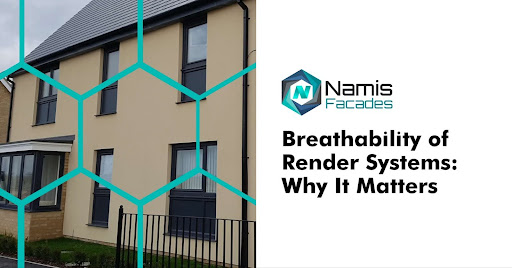Have you ever wondered why some buildings feel stuffy and damp, while others feel fresh and comfortable? The secret might be in the walls! Let’s explore breathable render systems and why they’re so important for healthy buildings. Understanding breathability in construction can change how we approach building design and maintenance, leading to more sustainable and comfortable living spaces.
Key Benefits of Breathable Render Systems
| Aspect | Why It Matters |
|---|---|
| Moisture Control | Prevents dampness and mold growth inside walls |
| Air Quality | Improves indoor freshness and reduces pollutants |
| Energy Efficiency | Enhances insulation, reducing heating/cooling costs |
| Durability | Increases longevity of building materials |
| Comfort | Creates a more pleasant and balanced environment |
What is Breathability in Render Systems?
When we talk about breathability in render systems, we’re referring to how walls manage moisture. Breathable renders allow water vapor to escape without trapping it inside the structure, helping to keep buildings dry and comfortable. This property, known as vapor permeability, measures how easily water vapor passes through a material. In breathable render systems, this balance ensures moisture escapes while the wall remains weather-resistant and structurally sound.

Think of it like wearing a breathable jacket: it keeps you dry from the rain while letting moisture from sweat escape, so you stay comfortable. Similarly, walls with breathable renders stay dry by allowing vapor to escape, reducing the risk of dampness, mold, and internal discomfort. While the term “breathing walls” is metaphorical, this process of vapor movement is critical for maintaining a healthy indoor environment and protecting the building’s integrity.
Breathable Renders
- Allow moisture to escape, reducing the risk of dampness within walls.
- Help prevent mold growth and protect structural integrity by keeping walls dry.
- Maintain insulation effectiveness by allowing trapped moisture to escape, indirectly supporting energy efficiency.
- Some types, like silicone-based renders, offer self-cleaning properties, reducing maintenance needs.
- Contribute to a healthier building environment by managing wall moisture, though their impact on indoor humidity is limited.
Traditional Renders
- May trap moisture, increasing the risk of dampness and structural issues.
- Can contribute to mold and damp-related health problems in poorly ventilated buildings.
- Do not support insulation performance and may reduce efficiency if moisture accumulates.
- Require frequent maintenance due to cracking and weathering over time.
- Can indirectly affect indoor air quality if trapped moisture leads to mold growth.
Applying Breathable Render Systems
Applying breathable render is a precise process that requires preparation, skill, and the right materials to ensure the best results. Here’s how it’s done:
1. Clean the Wall
The wall must be thoroughly cleaned and smooth. Dirt, loose material, or imperfections can affect the adhesion and performance of the render. Pressure washing, scraping, and repairing damaged areas are common tasks during this step.
2. Apply the Base Coat
The base coat acts as the foundation for the render. It improves adhesion and often includes reinforcement mesh to prevent cracking, particularly around high-stress areas like corners. This layer is essential for ensuring the system’s durability and structural stability.
3. Add the Main Render
The breathable render is applied evenly in smooth layers. The application technique and thickness depend on the type of render and the desired finish. It’s crucial to apply the render under appropriate weather conditions avoiding extreme heat, cold, or rain to ensure proper curing and long-term performance.
4. Finish It Off
The top layer provides the final texture and enhances the building’s aesthetic. It also adds extra protection against weather elements. Different textures can be achieved through various techniques, allowing for customization to suit architectural styles and personal preferences.
Conclusion: Why Breathability Matters
Breathable render systems are essential for keeping buildings dry, comfortable, and energy-efficient. They go beyond improving aesthetics; they actively help create healthy, durable, and sustainable environments. Whether you’re constructing a new home or renovating an older building, considering breathability can make a significant difference in the long-term performance and well-being of your property.
By allowing moisture to escape and preventing dampness, breathable renders help maintain the structural integrity of buildings, reducing risks like rot, mold, and decay. This not only protects the building itself but also contributes to healthier indoor air quality, minimizing issues related to damp-induced health conditions. Essentially, a building that “breathes” supports the comfort and health of its occupants.
Selecting the right breathable render system requires professional advice. Factors such as local climate, building materials, and specific environmental challenges all play a role in determining the most suitable option. Proper installation by skilled professionals is equally important to ensure the render performs as intended.
Investing in a high-quality breathable render system is an investment in the future of your building. It enhances longevity, improves energy efficiency, and creates a healthier living or working space, ensuring your property remains resilient and comfortable for years to come.



